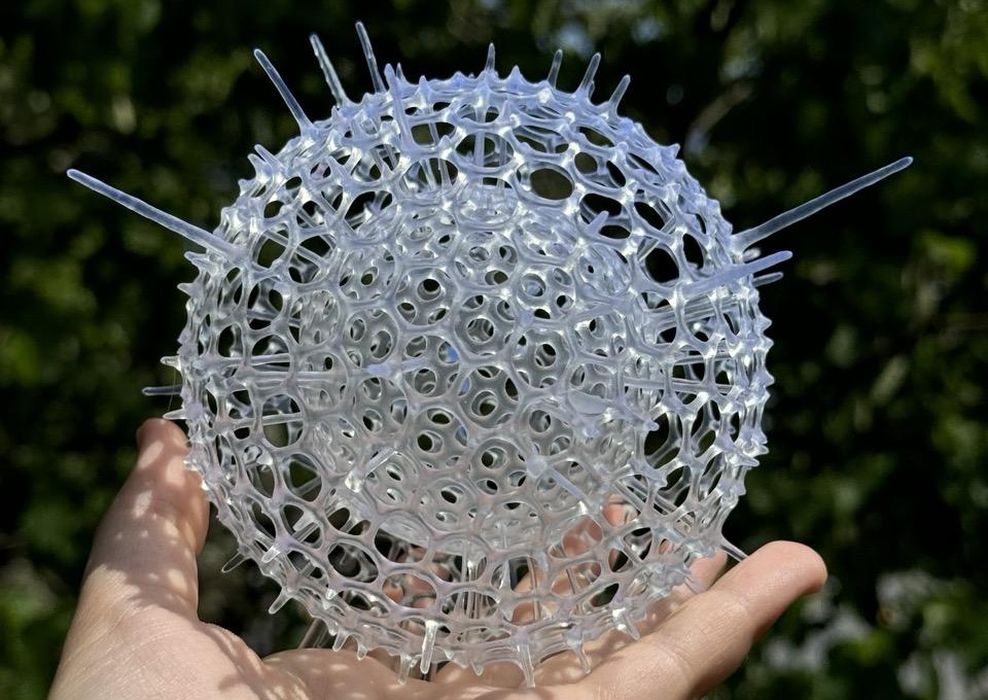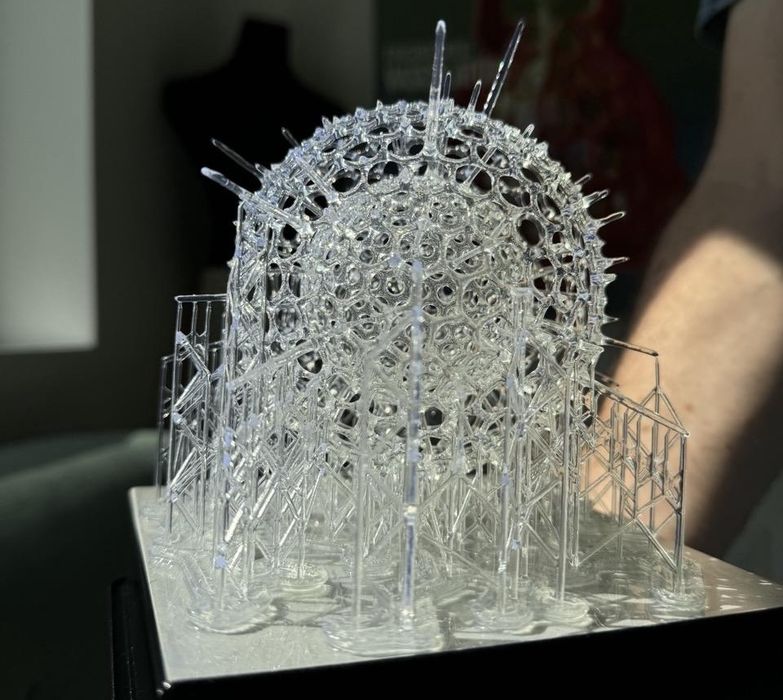
This week’s selection is the Radiolarian print by Nervous System.
Nervous System, is a long-term operation producing incredibly complex 3D models and prints by leveraging advanced mathematical algorithms. They’ve been producing amazing artwork for many years, and several of their works have been featured as our Design of the Week. At their site you can see countless examples of amazing productions, some of which are quite large.
Founders Jessica Rosenkrantz and Jesse Louis-Rosenberg, describe the company’s goal:
“Nervous System is a generative design studio that works at the intersection of science, art, and technology. Drawing inspiration from natural phenomena, we create computer simulations to generate designs and use digital fabrication to realize products.”
That’s precisely what’s happening in this design, the Radiolaria.
Hold on, what exactly is a “Radiolaria”? According to Wikipedia:
“The Radiolaria, also called Radiozoa, are protozoa of diameter 0.1–0.2 mm that produce intricate mineral skeletons, typically with a central capsule dividing the cell into the inner and outer portions of endoplasm and ectoplasm. The elaborate mineral skeleton is usually made of silica. They are found as zooplankton throughout the global ocean.”

This amazing 3D print appears to have been printed on a Formlabs resin 3D printer in clear material. Note that the object has two structural spheres, leading to a considerable amount of complex support geometry. The delicate structure might suggest that support removal could have been challenging, but Rosenkrantz said:
“We just ripped them off.”
The 3D model for the Radiolarian print was no doubt created using Nervous System’s proprietary algorithms, showing the versatility of their software. This item represents a living creature, and it’s not just an abstract geometry.
Via Nervous System and Mastodon
